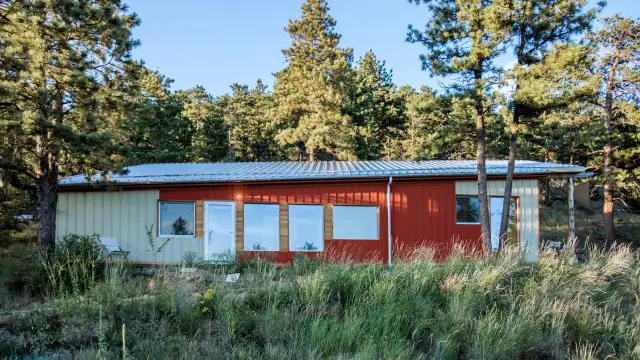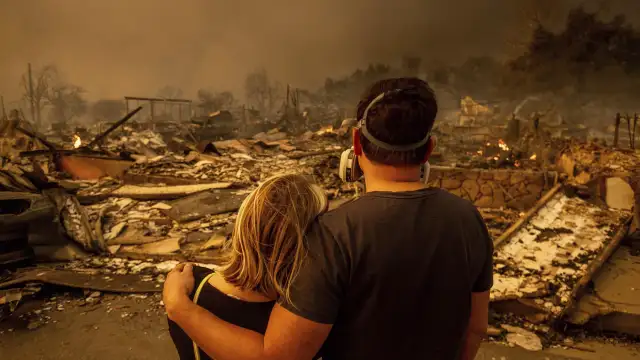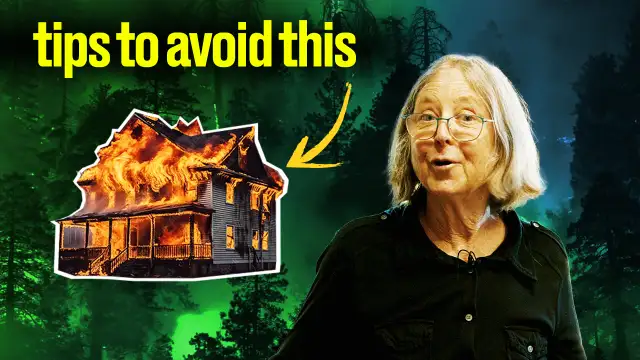The Financial-Emotional Compound Fracture
The situation becomes exponentially more complex when we consider that natural disasters not only destroy homes but also destabilize entire financial ecosystems. Insurance processes are labyrinthine and frequently adversarial. Homeowners discover that their coverage is inadequate for actual replacement costs, especially in an inflationary construction market. They're simultaneously negotiating with insurance adjusters, securing temporary housing, managing displacement-related expenses, and trying to make decisions about rebuilding–all while processing grief and trauma.
Many affected by both the Marshall Fire and the fires in Southern California faced (or are still facing) "underinsurance" gaps of $300,000 to $1,000,000 or more. They have had to decide whether to rebuild at all, whether to build smaller, whether to relocate entirely—all decisions with profound life implications, made while cognitively impaired by trauma and financially destabilized. The stress of these converging pressures creates what we began to think of as a compound fracture: the psychological injury of trauma is worsened by the material injury of financial precarity, each exacerbating the other.
In this context, every building decision carries disproportionate emotional weight. A choice about window specifications is also a referendum on whether they'll ever feel safe again, whether they can trust their judgment, and whether they're being foolish or wise with limited resources. The stakes feel impossibly high because, in a real sense, they are.
Trauma-Informed Building Practice
Working with rebuild clients has taught us that conventional building practices, which assume a cognitively normative client operating under normal circumstances, fail when applied to post-disaster reconstruction. We've had to develop what Paige Bower, one of our co-founders, has referred to as "trauma-informed building," an approach that acknowledges and accommodates the reality of our clients' situations.
The first principle is recognizing trauma's prevalence and impact. Every homeowner rebuilding after a disaster should be assumed to be experiencing some degree of traumatic stress. This isn't pathologizing; it's simply acknowledging the normal human response to abnormal circumstances. When our company began working with Marshall Fire survivors, we restructured our entire client engagement process around this assumption.
We implemented what we call "cognitive load reduction" in our consultations. Rather than overwhelming clients with every decision simultaneously, we broke the process into manageable phases with clear, limited choices at each stage, especially early in the process. We are not limiting client agency; we’re protecting their cognitive resources for the decisions that truly matter to them.
Next, we built extensive redundancy into communication. We confirmed decisions in multiple formats, including verbal, written, and visual. We sent summary emails after meetings. We didn't assume that information conveyed once had been retained. This isn't inefficiency, but a necessary accommodation for trauma-impaired memory consolidation. We never expressed frustration when clients needed to revisit decisions or when they changed their minds. We recognized this as part of the recovery process, not indecisiveness.
We cultivated trustworthiness through consistency and follow-through. We returned calls within the promised timeframe, even when we didn't yet have answers. We admitted uncertainties rather than offering false reassurances. We connected clients with previous customers who had rebuilt after the fire, creating peer support networks. We recognized that rebuilding trust after a disaster is a gradual process requiring dozens of small, reliable interactions.
Perhaps most importantly, we prioritized collaboration and empowerment over sales efficiency. Traditional building sales emphasize closing deals and moving projects forward. We maintain extraordinary patience with process ambivalence and revision. Trauma impairs decision-making confidence. Clients second-guess themselves, change their minds, and need to revisit settled questions. Under conventional business models, this would be inefficient and frustrating. In trauma-informed practice, it's expected and accommodated. We build a buffer into timelines specifically to allow for this reality.






.png)

.png)




